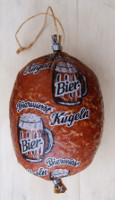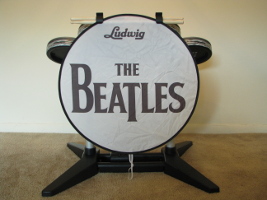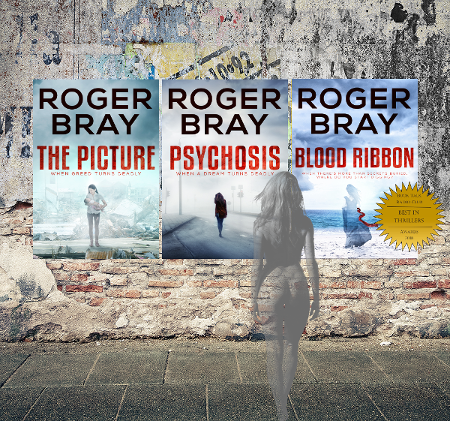When I began writing The Picture I carried out a lot of research into wounds and the treatment of them to try to make the treatment given to Ben Davis as realistic as I could. One of the procedures that he undergoes is the debridement of a wound which simply means cleaning the wound of debris, dead tissue and foreign objects. During the research I found that the person acknowledged to have understood the benefits of the technique was a Belgian medic during the First World War, Antoine Depage, who identified that the wound must be cleaned and allow healing to take place. The idea that war is a driver of innovation is not new and, contrary to Mr Starr’s lyrics, is sometimes good for something.
This was a good start given the amount of wounds filled with dying flesh and objects, other innovations in wound treatment from the time included wrapping wounds in carbolic lotion soaked gauze and sealing the wounds with bismuth iodoform paraffin paste to prevent infections. Even simple things like the treatment of so-called trench fever helped medics understand how to stop the spread of infections and more hygienic practises were introduced in First World War base hospitals which in turn helped develop more modern approaches to wound treatment.
While M. Depage’s techniques and new antiseptic treatment helped is was recognised early that better diagnostic techniques were needed as well, so enter the:
Mobile X-Ray Machines
Marie Curie recognised at the beginning of the war that quick treatment of wounds gave wounded soldiers the best chance of recovery. X-Ray machines existed but they were huge and delicate and couldn’t be easily moved to where they were needed She understood the need for field radiological centres near the front lines to assist battlefield surgeons. Without waiting for French government approval she procured vehicles, generators and x-ray equipment 20 mobile units and 200 fixed units at front line hospitals across the front.
And that was after she taught herself to drive, learned basic mechanics to keep the mobile units running and gave herself a crash course in anatomy to learn how to best use the machines. By the end of the war over a million soldiers had been treated thanks to her dedication. After the war she received no formal recognition of her work from the French government
X-rays had only a limited usefulness up to the time of the war…
Marie Curie, Radiology in War Tweet
Mobile X-Ray became progressively smaller through the work of people like Frederick Jones who served as sergeant with US forces in France. At the beginning of the Second World War he also developed air-conditioning units for military field hospitals to allow blood for transfusions to be stored and a refrigerator for military field kitchens.
Speaking of blood:
Blood Banks
Prior to the war blood transfusion had been carried out but these were directly from donor to recipient. No method had been discovered to store the blood. Oswald Hope Robertson a medical researcher and US Army officer attached to the (British) Royal Army Medical Corps. In 1917 in anticipation for the casualties expected from the upcoming Third Battle of Ypres he was researching the storage of blood. He found that by drawing blood from volunteers and storing it in glass bottles containing citrate and dextrose solution the blood would not coagulate. It was found that using this technique and storing the blood in ice chests the blood remained viable for up to 28 days. He personally administered blood to the wounded and showed that the procedure was safe and repeatable. He also taught other Medical Officers how to transfuse blood and soon many, many wounded were being treated.
Sun Lamps
In the winter of 1918 the undernourishment of Germans because of the war led an increase of rickets from which, it is estimated, half of all children in Germany were suffering from. Rickets is a condition when bones become soft and deformed, the exact cause was not know but it was associated with poverty which in itself can cause an inadequate calcium in the diet which may also be a cause.
At the time a Berlin doctor named Kurt Huldschinsky noticed that the children were also very pale, so he conducted an experiment in which he put four children under mercury-quartz lamps that emitted ultraviolet light. The treatment worked and the children’s bones became stronger. In May 1919, when the sun of summer arrived, Huldschinsky had them sit on the terrace in the sun. Children around Germany were brought before the lights. In Dresden, the child welfare services had the city’s street lights dismantled to be used for treating children.
Researchers later found that Vitamin D is necessary to build up the bones with calcium and this process is triggered by ultraviolet light. The undernourishment brought on by war not only produced the disease but the knowledge to cure it.

Vegetarian Sausages
Not one of my favourite foods but innovative for the time and driven by the needs of the First World War. As the British blockade of Germany began to effect food supplies starvation set in across the country. In Cologne the mayor decided that something had to be done and used his inquiring mind to come up with a substitute for the staple German food, the sausage of which there are many regional variations like the bratwürste, knackwürste and my favorite, bierwürste. A sausage made specifically made to be eaten while drinking beer, what a fantastic combination.
Anyway, the mayor tried ways to substitute available materials for scarce items, such as meat and came up with soy as the meat replacement. Although not really vegetarian, the soya sausage he managed to come up with combined the right ingredients that would stay together during cooking and so the Kölner Wurst (“Cologne Sausage”) was invented.
The mayor went onto better things, he was Konrad Adenauer and became the first chancellor of Germany after the Second World War, his sausage, not so much. He applied for a patent for his meatless sausage from the Imperial Patent Office in Germany but was denied one as it was contrary to German regulations regarding proper content of a sausage, with no meat it couldn’t be a sausage. In a twist of fate though he was eventually granted a patent on his soy sausage in June 1918, by King George V of Britain.

Multi-track Recording
As with many innovations the result doesn’t always come directly from war but the underlying technology certainly does. Like the magnetophon which was developed during the Second World War in Germany and were widely used in German radio broadcasts. Although they were a closely guarded secret at the time the Allies were aware of the existence of the pre-war magnetophon recorders, but not of the introduction of high-frequency bias and PVC-backed tape. The new systems used. The innovative new technology was discovered during the Allied invasion of Germany during 1944-45.
Enter US Army Signal Corp soldier Jack Mullin who took personal possession (I imagine that is a euphemism for ‘liberated’ or nicked) of two of the magnetophon devices and realised that they were the most advanced magnetic tape recorders in the world at the time.

Mullin spend the next several years as a civilian dissecting the tape decks and building his own version for use in sound recording for Hollywood movies. The amazing fidelity of sound reproduction caught the attention of MGM Studios, which led to Bing Crosby investing in further development of the recorders via electronics firm Ampex. Crosby gave one of the first production model Ampex decks to Les Paul, who used it to invent the modern multi-track recording process in the mid-1950’s. Important innovations in four- and eight-track music recording were employed for records by The Beatles and The Beach Boys in the 1960’s.
Next time you’re enjoying a favourite piece of music in amazing multi-track just remember an enterprising young G.I. called Jack Mullin and the two Nazi reel to reel tape machines he took possession of.
The "Original" Computer
At the start of the Second World War the Germans had two electro-mechanical machines which they used to encrypt radio messages and these two machines stand at the forefront the modern day computing. Not the machines themselves but the counter measure which were put in place to defeat the encryption. Enigma is quite well know thanks to various movies, some good and others an egregious distortion of history by Hollywood. Enigma was invented as a commercial machine by Arthur Scherbius at the end of the First World War. It later became the central encryption device for the German armed forces during the Second World War.
The other was the Lorenz machine used from mid-1941 onwards, in various models for high-level communications between the German High Command in Wünsdorf close to Berlin, and Army Commands throughout occupied Europe.
The Enigma was difficult to crack, there were longs periods of darkness in the history of the effort. If the Enigma was difficult Lorenz was impossible, or at least one decryption could take months and was not able to provide the real time data required. There were some successes, mainly due to bad techniques of German operators which gave the British cryptanalysts the occasional key to use but even then the decryption could take months.
Enter Tommy Flowers, a British engineer who worked for the Post Office. He was approached to build a machine to enable the automation of the decryption of the Lorenz traffic. He proposed a machine, named Colossus, and which would contain 1,800 valves. An amazing amount at the time and seen by many as a waste of resources. Flowers persevered even though he did not receive official backing until much later and he even used his own money to buy some of the parts required.
After 10 months it was finished and using a single tape to relay the date the Colossus (now named Mark 1) was able to feed the tape at 50kph and was able to read in paper tape at 5000 characters per second, a speed which had been impossible prior and reduced the time to break Lorenz messages from months and weeks to hours. The breakthrough had come in time for messages to be deciphered giving vital information to Eisenhower and Montgomery prior to D Day. These early deciphered Lorenz messages showed that Hitler had swallowed the deception campaigns, the phantom army in the South of England, the phantom convoys moving east along the channel and that Hitler was convinced that the attacks were coming across the Pas de Calais and that he was keeping Panzer divisions in Belgium.
Colossus was the first of the electronic digital machines with programmability, albeit limited in modern terms but it had started the research and knowledge that have led to modern computers.
For more information on Colossus, as I have only barely scratched the surface, please go here or here.



